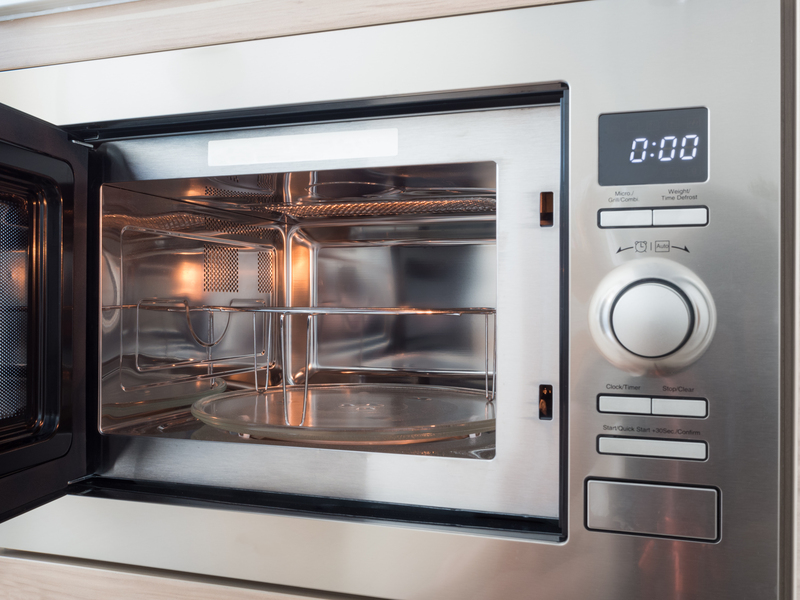Perfect Your Sofa Cover Laundry Skills with Expert Advice
Posted on 18/05/2025
Perfect Your Sofa Cover Laundry Skills with Expert Advice
Sofa covers are an essential part of home decor, playing a critical role in protecting your furniture while adding style and comfort to your living room. However, maintaining their cleanliness and vibrancy can be a challenge. If you're keen on perfecting your sofa cover laundry skills, you've come to the right place. This comprehensive guide, packed with expert advice and practical tips, will help you become a sofa cover cleaning expert, ensuring your living space always looks its best.

Why Cleaning Your Sofa Covers Is Important
Regularly cleaning your sofa covers is not just about aesthetics--it's vital for health and the longevity of your furniture. Dust, bacteria, allergens, and everyday spills accumulate on upholstered furniture. Without proper care, dirt can become ingrained, leading to faded fabrics, unpleasant smells, and potential health issues.
Key benefits of maintaining clean sofa covers:
- Prolongs Fabric Life: Frequent cleaning protects fibers and extends your sofa's lifespan.
- Prevents Allergies: Regular removal of dust and pet dander reduces allergen accumulation.
- Improves Room Aesthetics: Crisp, clean covers immediately elevate your living area's visual appeal.
- Healthier Living Environment: Minimizes germs and bacteria for a cleaner home.
Analyzing Your Sofa Cover Material
Not all covers are created equal. Whether your sofa cover is made from cotton, polyester, linen, velvet, microfiber, or a blend, each requires different care. Understanding your fabric is the first step in mastering sofa cover washing techniques.
Common Sofa Cover Fabrics and Their Care Needs
- Cotton: Durable and easy to clean, but can shrink if not washed properly. Use cold water and avoid high heat during drying.
- Linen: Elegant and breathable, but sensitive to heat. Wash in gentle cycles and air dry to prevent wrinkling and shrinkage.
- Microfiber: Stain-resistant and simple to maintain. Machine washable, but avoid using excessive detergent.
- Velvet: Luxurious but delicate; typically requires hand-washing or professional cleaning.
- Polyester blends: Highly resilient, often safe for machine washing, but check for colorfastness.
Step-by-Step Guide: How to Wash Sofa Covers Properly
Whether washing slipcovers for your sectional, loveseat, or single couch, following a systematic process ensures the best results. Here's an expert-approved routine to launder your couch covers perfectly every time.
1. Read the Care Label
Always begin by checking the care label. These symbols and instructions are crafted specifically for your fabric type and contain crucial information like wash temperature, drying options, and ironing recommendations. Never skip this step!
2. Vacuum and Pre-Treat Stains
- Vacuum: Use a handheld vacuum or upholstery attachment to remove dust, crumbs, and pet hair before washing.
- Stain Treatment: Gently dab stained areas with a mix of mild detergent and lukewarm water (test on a hidden area first). For persistent stains, a commercially available upholstery cleaner may be necessary.
3. Machine or Hand Washing: Technique Matters
Most modern sofa covers are machine washable--but always follow the label and these expert tips:
- Cold Water Only: Use cold or lukewarm water to prevent shrinkage or color fading.
- Gentle Cycle: Select a delicate or hand-wash cycle for minimal agitation.
- Mild Detergents: Avoid bleach or harsh chemicals that ruin fabric fibers or colors.
- Zippers & Fasteners: Close all zippers and Velcro to avoid snagging during the wash.
- Laundry Bag: Place covers in a mesh laundry bag for added protection.
4. Hand Washing Velvet and Delicate Covers
For delicate textiles or cleaning velvet sofa covers, opt for hand washing:
- Fill a basin with cool water and a gentle cleaner.
- Submerge the cover and use minimal agitation.
- Rinse thoroughly and press to remove excess water (never wring).
5. Proper Drying Techniques
- Air Drying: The safest method for most covers. Lay flat on a clean surface or hang to air dry, reshaping as needed to avoid wrinkles.
- Machine Drying: If permitted, use a tumble dryer on the lowest heat and remove while slightly damp to prevent creasing and shrinking.
- Avoid Direct Sunlight: This can cause fading, especially for bright or dark fabrics.
Essential Tips for Removing Tough Sofa Cover Stains
Encountered stubborn stains such as ink, red wine, or pet accidents? Here's how to tackle them like a pro:
- For Grease/Oil: Sprinkle baking soda to absorb oil, let sit for 15 minutes, vacuum it up, and treat the spot with dish soap.
- Red Wine/Coffee: Blot (don't rub!) with a dry cloth, then dab with a mix of mild detergent and cold water. For persistent stains, try a mixture of club soda and white vinegar.
- Ink: Dab (not scrub) with rubbing alcohol using a white cloth.
- Pet Stains: Use an enzymatic cleaner specifically designed for upholstery. Act quickly!
Always test stain removers on an inconspicuous area first to avoid damage.
How Often Should You Wash Sofa Covers?
The frequency of washing your sofa covers depends on lifestyle, usage, and family size:
- Every 3-4 months: For average households.
- Monthly: If you have kids, pets, or allergies.
- Spot clean as needed: Address spills and stains immediately before they set.
*Tip: Rotate and launder sofa covers in sections, especially for sectionals or multi-piece slipcovers for even wear and color consistency.
Preventing Damage and Preserving Sofa Cover Quality
Perfecting your sofa cover cleaning techniques means preventing damage as much as removing dirt. Here are some key prevention and maintenance tips:
- Avoid Overloading the Washer: Wash covers alone or with similarly colored items to prevent stretching and color bleeding.
- No Hot Water: Heat is the enemy of most upholstery fabrics; it causes fading, warping, or shrinkage.
- Reshape While Damp: This helps slipcovers retain their original fit and avoids stubborn wrinkles.
- Keep Out of Direct Sunlight: Store covers away from harsh sunlight to prevent faded colors when not in use.
The Power of Professional Sofa Cover Cleaning
For luxury materials, intricate detailing, or deep-set stains, consider professional upholstery cleaning. Specialists use advanced solutions and tools to safely revitalize your covers without damage.
- Dry Cleaning: Necessary for silk, wool, or delicate blends.
- Steam Cleaning: Deep cleans and sanitizes most fabrics, removing tough stains and odors.
Always inform professionals of your cover material and any previous treatments for best results.
Best Products and Tools for Sofa Cover Laundry
Investing in the right tools and detergents can greatly improve your sofa slipcover cleaning routine:
- Mesh laundry bags: Prevent wear and tear during the wash.
- Gentle, unscented detergent: Minimizes residue and irritation (especially for allergy sufferers).
- Stain remover pens: For quick spot treatments on everyday stains.
- Upholstery brushes and vacuums: For pre-washing and in-between maintenance.
- Iron or steamer: Restore a crisp, wrinkle-free look after air drying (ensure the fabric is suitable).
Troubleshooting Common Sofa Cover Laundry Problems
- Shrinkage? Reshape and stretch the fabric while it's still damp. Avoid dryers if your cover is prone to shrinking.
- Wrinkles or creases? Iron with a damp cloth on low heat or use a garment steamer for delicate fabrics.
- Lingering odors? Soak in a solution of 1 part vinegar to 3 parts water before washing.
- Color bleeding? Wash separately the first few times and use color capture sheets in your machine.
Maintaining Sofa Cover Freshness Between Washes
The secret to always-fresh furniture isn't just in washing sofa covers regularly--it's in the details of daily care.
- Vacuum weekly: Using the upholstery attachment to lift away dirt and dust.
- Rotate cushions: For an evenly worn, always-plump look.
- Use throw blankets or covers: Easy to wash, they take the brunt of spills and stains.
- Keep pets groomed: Brushed pets shed less, meaning fewer allergens and less frequent washing.

Expert Answers to Sofa Cover Cleaning FAQs
- Can I bleach white sofa covers? Generally, no. Bleach can weaken fibers and cause yellowing. Instead, use oxygenated "color-safe" bleach or baking soda.
- Are machine-washable covers really "machine safe"? Yes, if the label says so. Use gentle cycles, cold water, and mild detergents.
- Can I wash sofa covers with other laundry? It's best to wash covers separately to avoid pilling and color transfer.
- Should I iron my covers after washing? If the fabric allows, iron or steam (on low). For stretch covers, replace slightly damp to conform to sofa shape.
Conclusion: Enjoy Cleaner, Longer-Lasting Sofa Covers
Perfecting your sofa cover laundry skills means more than just tossing them into a washing machine. With the advice from upholstery experts on fabric care, stain removal, machine vs. hand washing, and best maintenance practices, your sofa covers can look, feel, and smell fresh for years to come.
Don't forget: Regular cleaning, prompt stain treatment, and gentle, informed care all add up to longer-lasting beauty and health for your home. With these pro strategies, you'll never have to worry about dingy, stained, or ill-fitting covers again!
By mastering these sofa cover cleaning tips, you'll enjoy a fresher, more inviting living space while protecting your investment for years to come.





